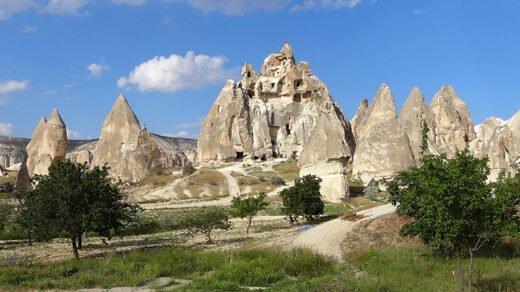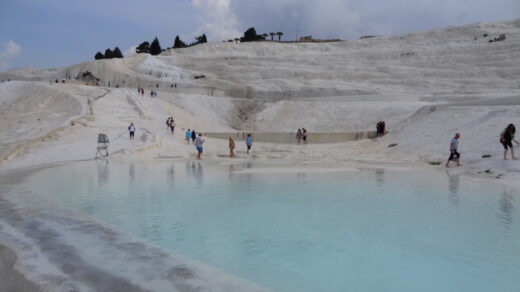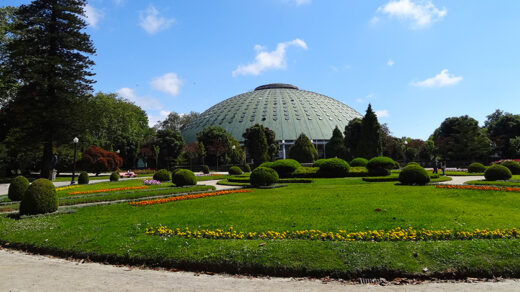Let’s continue our trip around Iceland’s Golden Circle. Last time, we stopped at Geysir. Today, I introduce you to Gullfoss, which is really a good start for an article about the Golden Circle since it literally means Golden Falls!
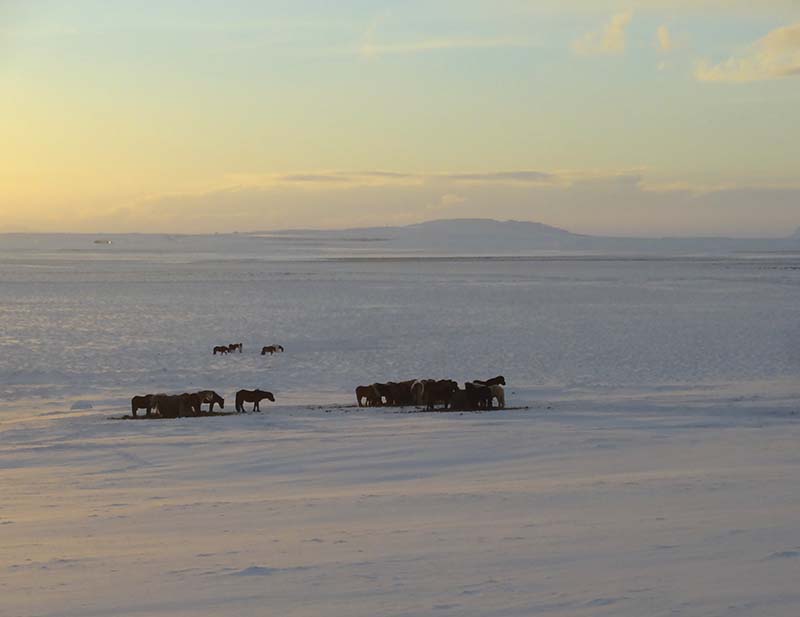
Golden Circle – Stop 5: Gullfoss
The “Golden Falls” are truly beautiful. During Winter, they are surrounded by snow and partly frozen while during Summer, they are very active and you can often observe a rainbow over them.
The waterfall is plural because it has two stages. The first one is 11 m high and the second 21 m high and then, the water falls into a crevice. You can walk on each side of the waterfall and there are even benches to sit down and enjoy the view (and, in our case, the raspberries bought earlier).
If you watched the series Vikings, the waterfalls appear in episode 17 “The Most Terrible Thing” of season 5.
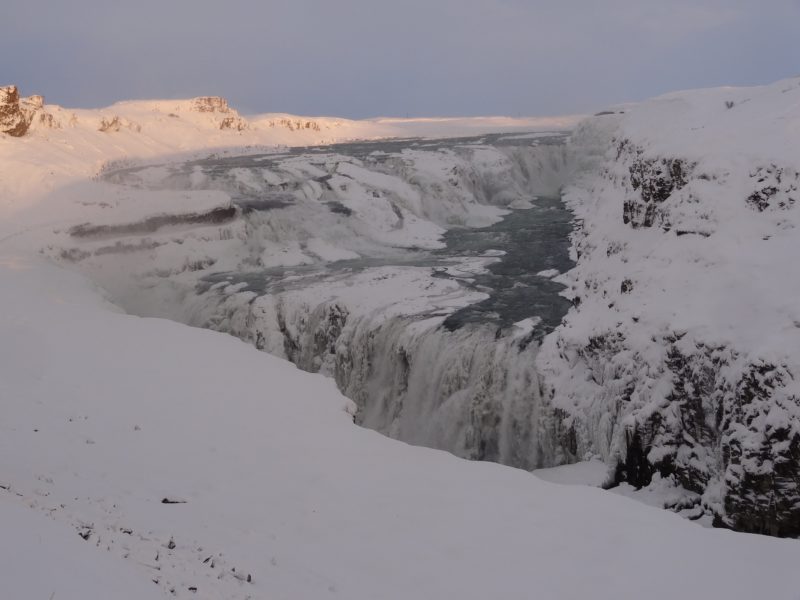
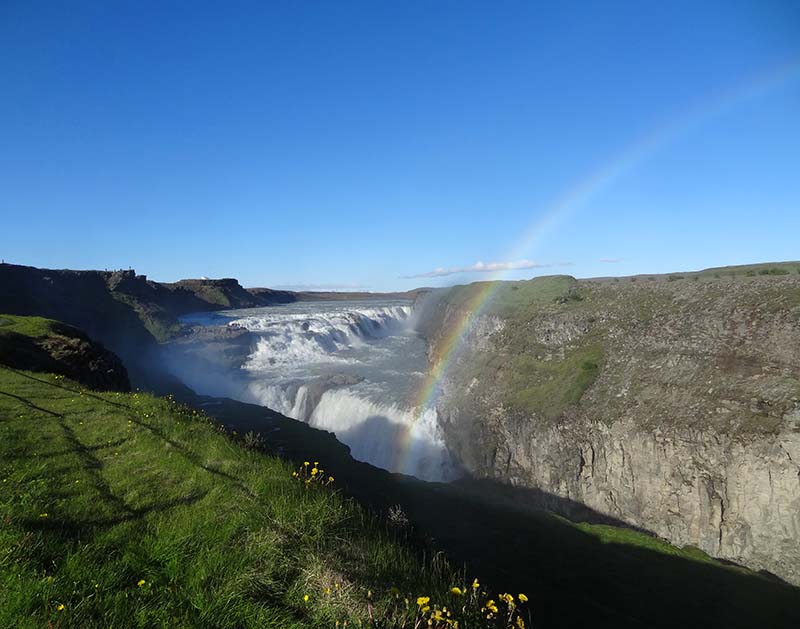
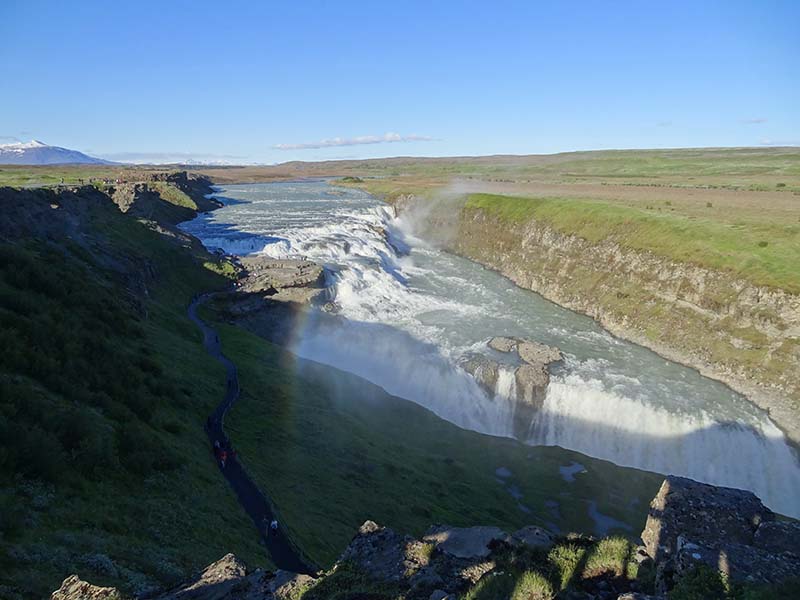
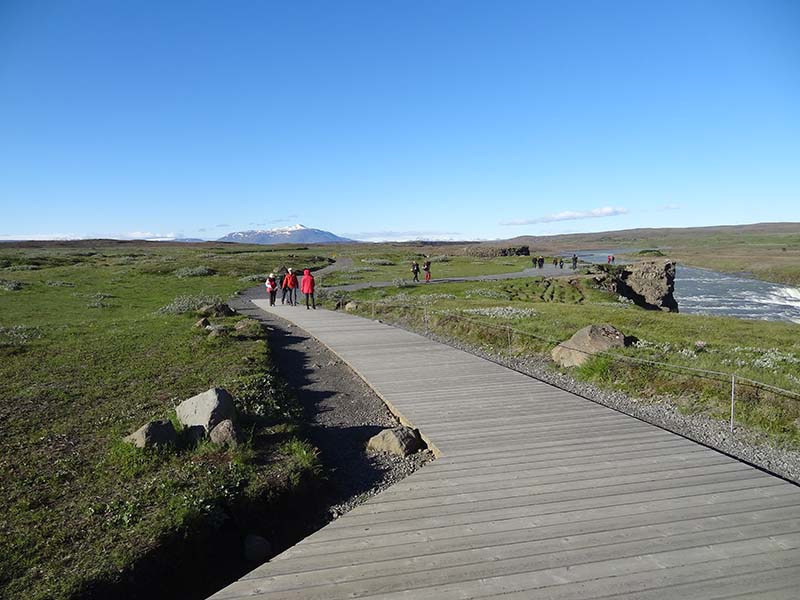
Wild Horses Running Along The Golden Circle
Now, this isn’t exactly part of the Golden Circle, but in Winter and Summer, you will cross paths with horses. Icelandic horses have gorgeous hair, and we stopped many times (during the road-trip in 2017) to take pictures of them. Some are wild and some others are in fields. Beatrice tried to approach one of them to pet it, but the horse and her were not confident enough to get acquainted.
At some point, when we were driving, a few horses were running on the road and cars slowed down to let them pass and take pictures. There were some riders with them as well, so we were not sure if they were wild or not.
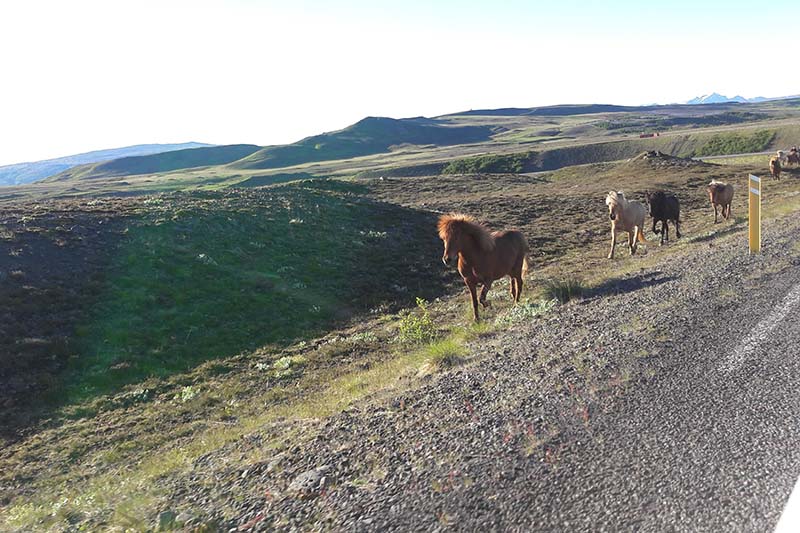
Golden Circle – Stop 6: Thingvellir Or Þingvellir National Park
A Very Different Experience
In 2017, we spent quite some time in Þingvellir. I remembered it from my trip in 2014 because we had done a short hike in the snow there and the guide had said that a number of scenes of Game of Thrones “North” were filmed there. To know more about these, here are two articles talking about the specific scenes and locations: A Guide to the Game of Thrones Filming Locations in Iceland and Game Of Thrones Adventures In Thingvellir National Park.
I could barely recognize the places I saw in Þingvellir during the Winter, because it really is different in Summer. To be honest, I recognized the path inside the main fissure, but that was pretty much it. What made the experience different is also that, since we drove there by ourselves and not with an organized tour, we had all the time in the world and did a really long hike instead of just a short one. Ok, we got lost and panicked a little bit at some point, but all in all, it was great.
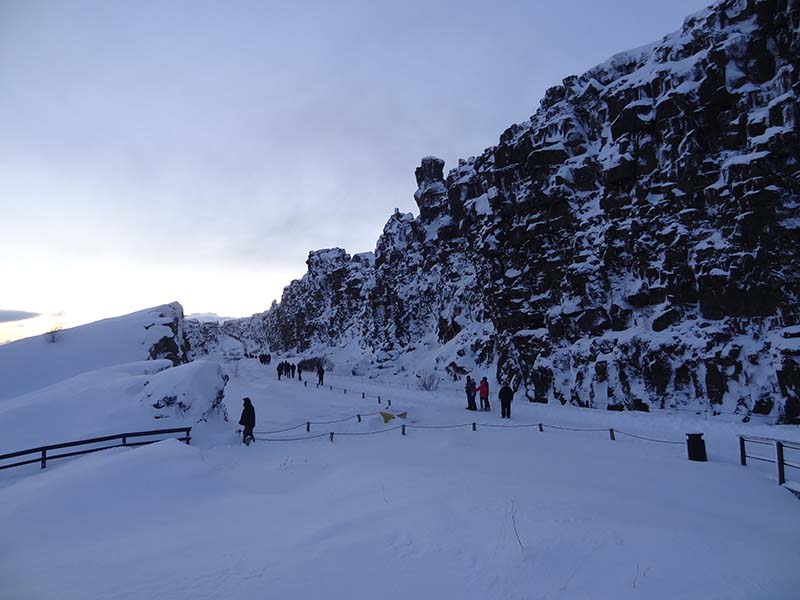
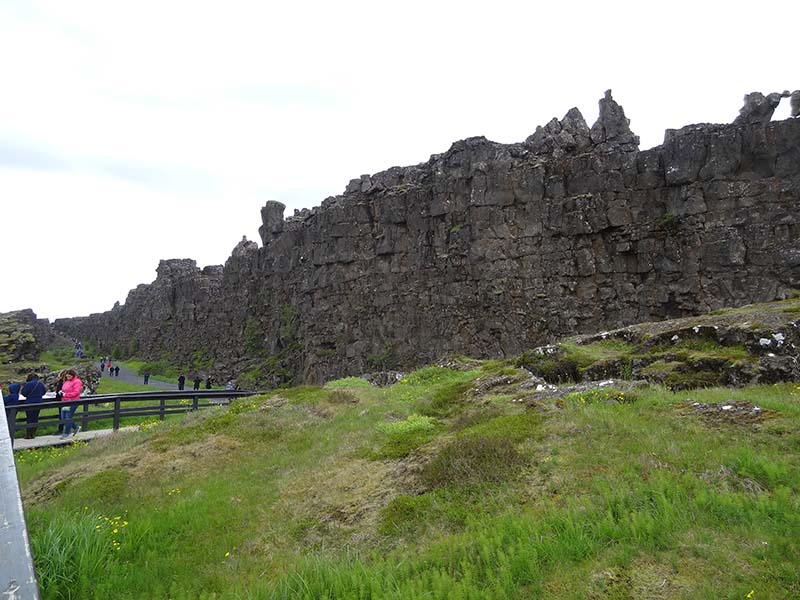
We started on the wooden path and had a break at the Öxarárfoss Waterfall. I don’t remember seeing it during Winter, but maybe we didn’t go there or maybe it was frozen. This is another beautiful waterfall I recommend seeing.

A Historical Landmark
After that, we continued to the lake and to the Law Rock. You may not know that, but Þingvellir is an important historical and social location: it literally means “Assembly Plains“. Indeed, the Alþing general assembly was established around 930 and they continued to meet there until 1798. That is why, since 1928, Þingvellir has been a protected national shrine. Also, the national park is a UNESCO World Heritage site.
Between the 10th and 13th centuries, the most important place in Þingvellir was the Law Rock (or Lögberg). It’s on that rock that the Law Speaker or the person wanting to address the Parliament would stand. Today, it is marked by a flagpole.
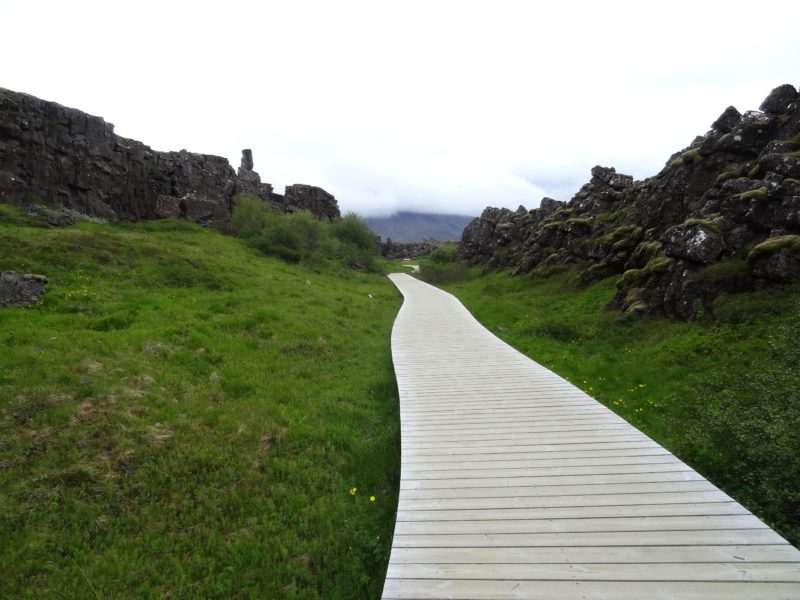
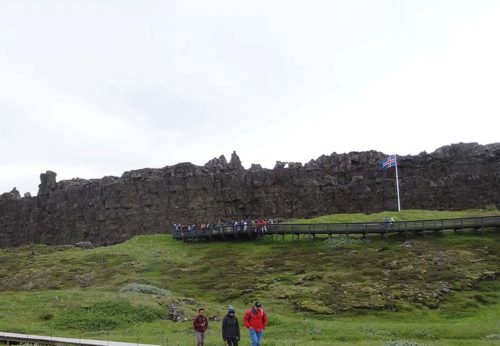
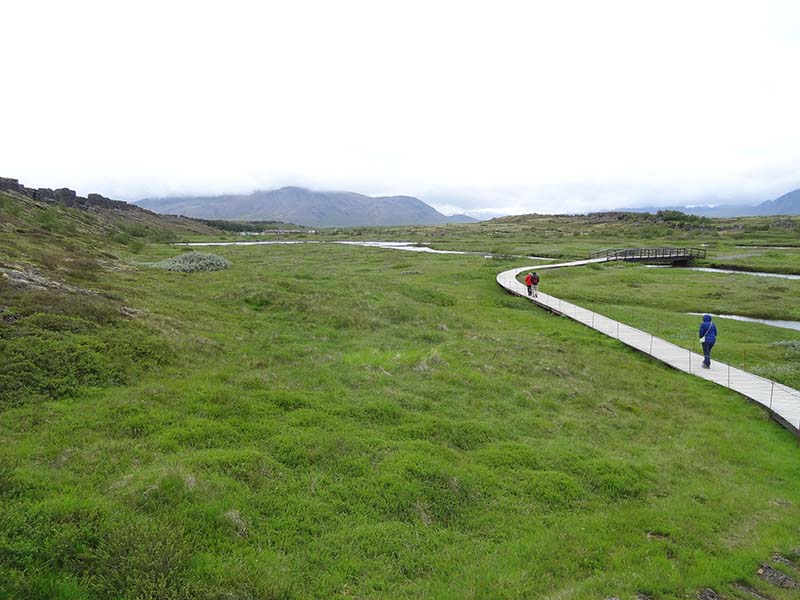
Fissures Everywhere
We continued to explore further and saw many fissures. The scenery is fantastic, no wonder it was used to film fantasy movies and series! It looks as if a giant stepped hard on the ground and opened it. In some of them, there is water. You have to have good shoes and be careful where you walk to do this hike.
The reason for these fissures is the movement of the Eurasian and North-American plate boundaries that run through Iceland and that, at Þingvellir, break apart. This is a bit complicated for me so, if you want to get more information, I suggest you read the official website. You’ll also find maps of the trails.
In Þingvellir, you can do all sorts of activities including diving. We put the Silfra fissure on our list of to-do things, but we had to make choices and, to be honest, I’m a bit afraid of dark waters and I might not have enjoyed this one. However, if that is your kind of thing, it seems really cool. Because the water is filtered through underground lava for 30-100 years before arriving into the fissure, the water is extremely pure and clear. That means that you have an amazing visibility down there. But be prepared: the water is 2°C – 4°C all year round, so you’ll need proper equipment.

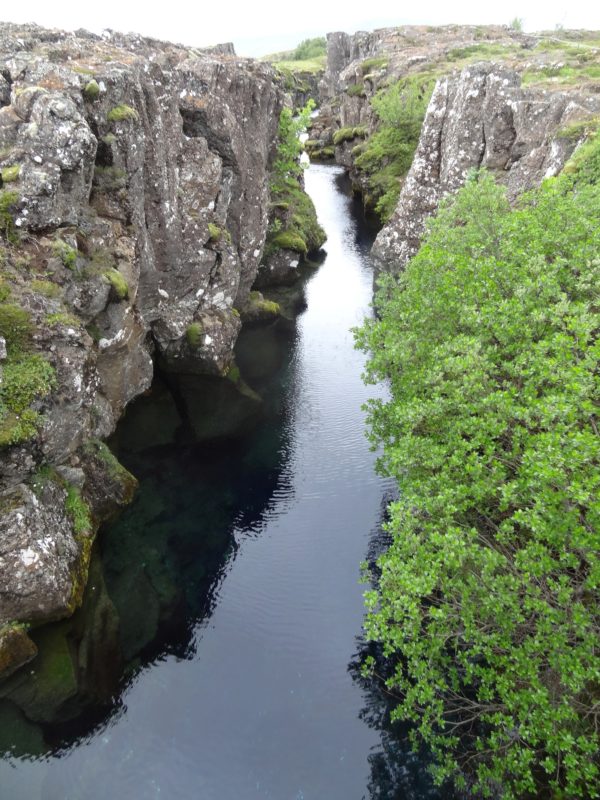
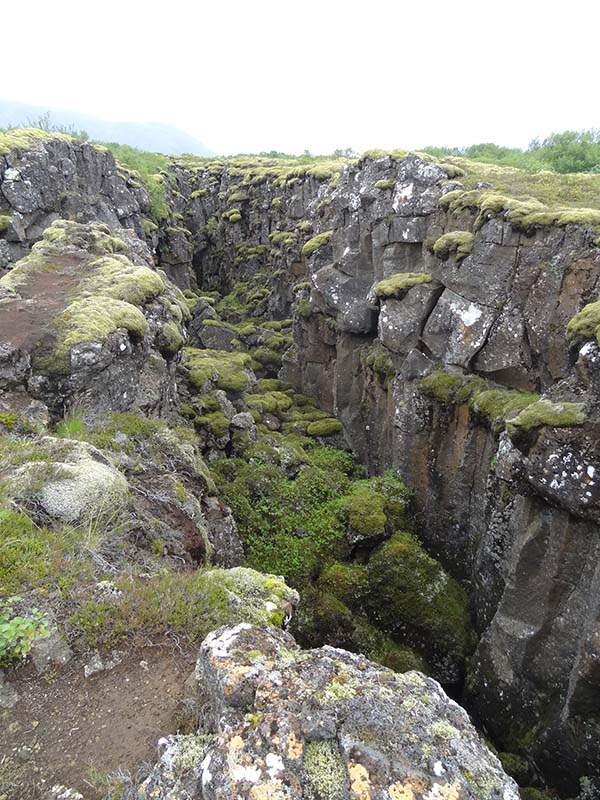
After The Effort, A Stop At The Blue Lagoon In Reykjavik
This is not really part of the Golden Circle, but after a long day hiking, it is nice to enjoy a bath in a lagoon. The most famous in Iceland is the Blue Lagoon, but there are others like near Mývatn, where we nearly stopped. We planned to, but were too tired and it really smelled like farts (sulfur).
In the end, we did only one lagoon: the Blue Lagoon and we enjoyed it very much. However, note that this is not a natural lagoon. If the land and the lava are natural, the spring is not: the hot water comes from the geothermal power plant near the lagoon. Still, it is a pretty cool experience. I’m just telling you in case you want to try a natural lagoon as well.
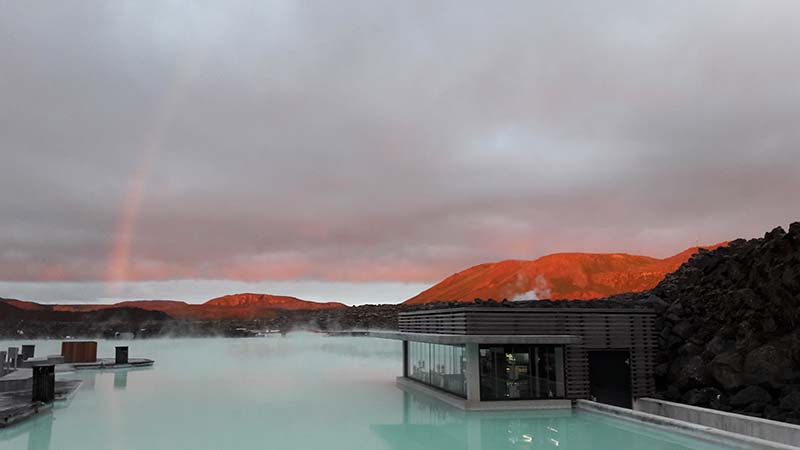
One Last Thing To Know: Mobile Data
What we loved is that Iceland is part of the European countries where our mobile data plan worked. That means that we could use our phones as GPS and to check our emails at any time (or to book a hostel room) even at the top of a glacier. The network quality is really good!

To see more photos of Iceland, you can visit the gallery Iceland.

